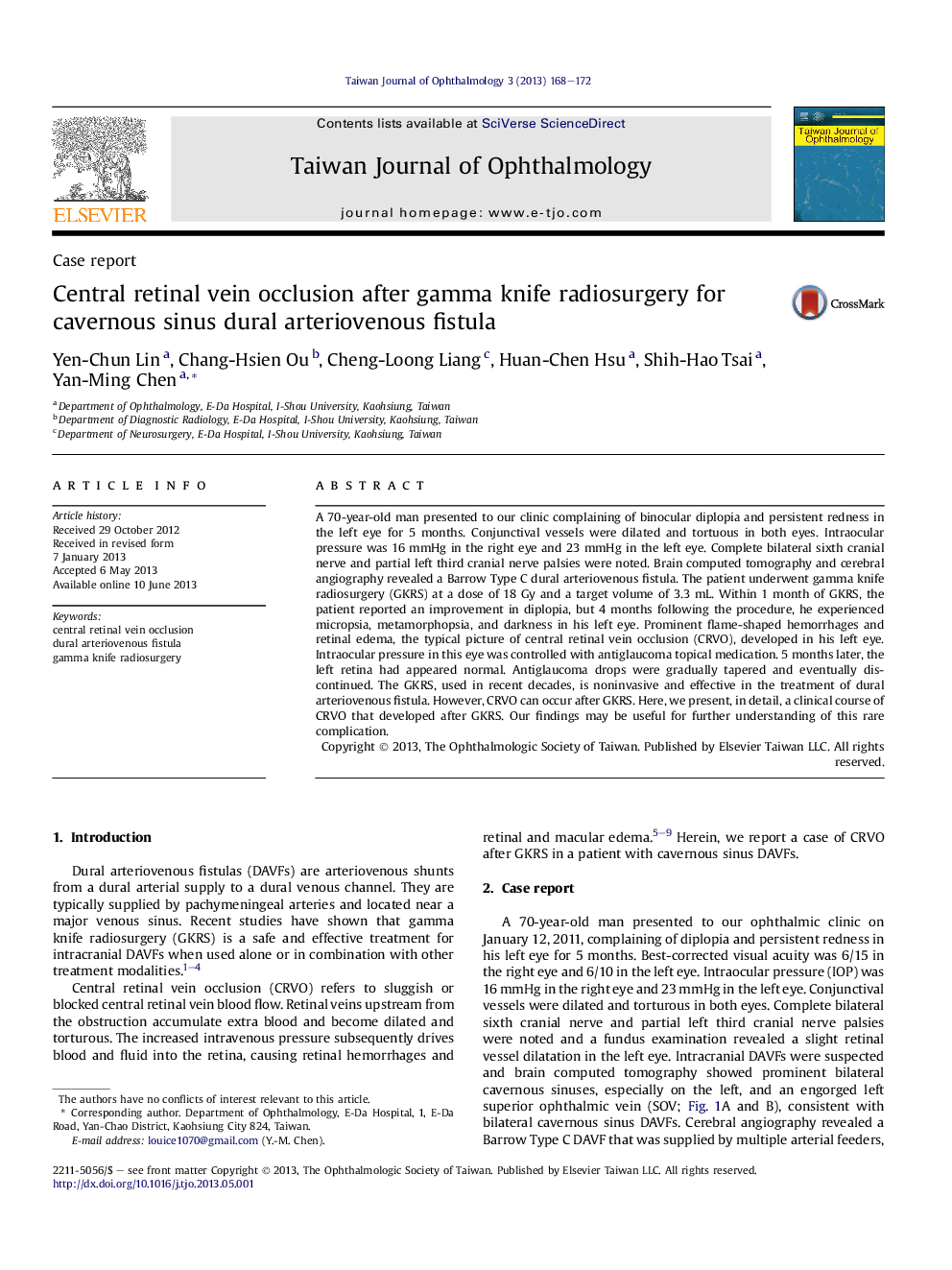| Article ID | Journal | Published Year | Pages | File Type |
|---|---|---|---|---|
| 4033389 | Taiwan Journal of Ophthalmology | 2013 | 5 Pages |
A 70-year-old man presented to our clinic complaining of binocular diplopia and persistent redness in the left eye for 5 months. Conjunctival vessels were dilated and tortuous in both eyes. Intraocular pressure was 16 mmHg in the right eye and 23 mmHg in the left eye. Complete bilateral sixth cranial nerve and partial left third cranial nerve palsies were noted. Brain computed tomography and cerebral angiography revealed a Barrow Type C dural arteriovenous fistula. The patient underwent gamma knife radiosurgery (GKRS) at a dose of 18 Gy and a target volume of 3.3 mL. Within 1 month of GKRS, the patient reported an improvement in diplopia, but 4 months following the procedure, he experienced micropsia, metamorphopsia, and darkness in his left eye. Prominent flame-shaped hemorrhages and retinal edema, the typical picture of central retinal vein occlusion (CRVO), developed in his left eye. Intraocular pressure in this eye was controlled with antiglaucoma topical medication. 5 months later, the left retina had appeared normal. Antiglaucoma drops were gradually tapered and eventually discontinued. The GKRS, used in recent decades, is noninvasive and effective in the treatment of dural arteriovenous fistula. However, CRVO can occur after GKRS. Here, we present, in detail, a clinical course of CRVO that developed after GKRS. Our findings may be useful for further understanding of this rare complication.
